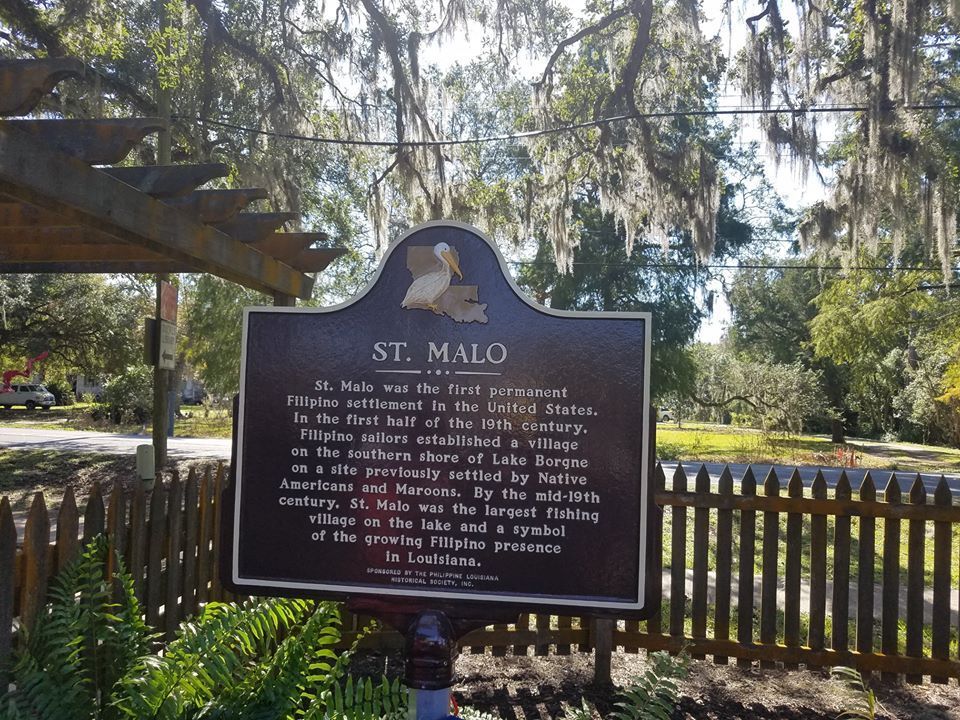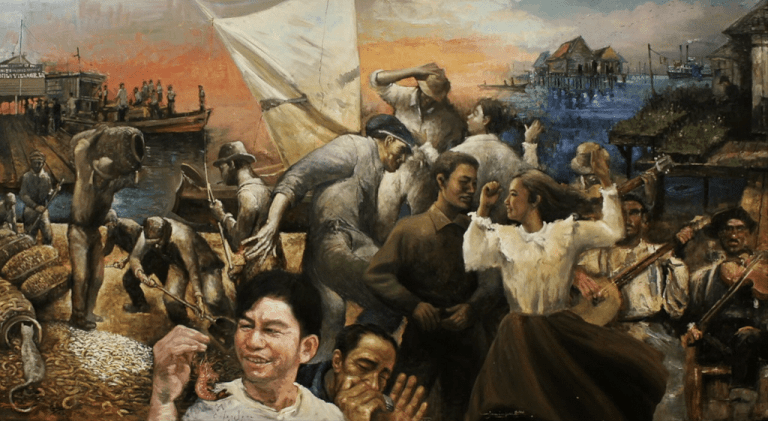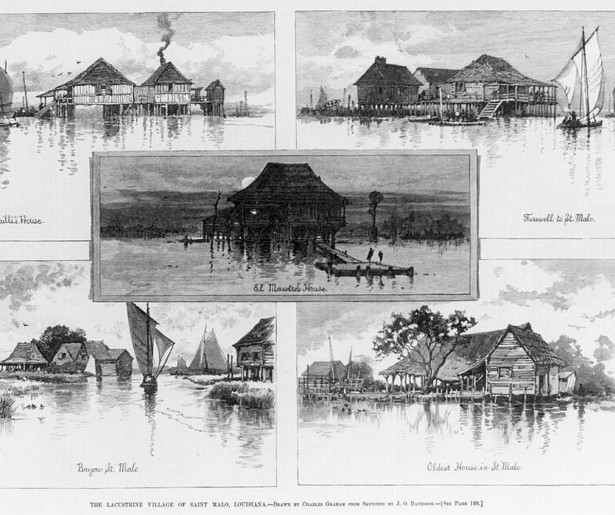
A new historical marker for St. Malo, now standing inside the Los Islenos Museum Complex at Saint Bernard Parish in Louisiana, holds great meaning in Filipino-American history.
Unveiled last November 9th, 2019, the St. Malo Marker is a reminder of the first Filipino settlement in America and a testament to Filipino resilience and ingenuity. The settlement began around 1763, even before the birth of the United States of America.
Historical records indicate that the first Filipino settlers came from ships of the Manila Galleon Trade during the Spanish colonial administration of Louisiana. The Filipino mariners decided to stay and established settlements along the shores of Lake Borgne where they lived off the marshland and harvested abundant seafood like shrimps and fish.
Their dwellings were built in the style found in the Philippines at that time. Their houses were elevated above the water and there were large piers to dry their harvest of shrimps and fish.
“Filipinos pioneered the dried shrimp industry, the predecessor of the modern shrimping industry,” says Robert Romero, Honorary Philippine Consul and the President of the Philippine-Louisiana Historical Society which was established in 2012.

The most important settlement was named St. Malo in Saint Bernard Parish, which in fact is the first Filipino settlement in the entire United States. The settlement grew, prospered, and flourished from the 18th century up to the early 20th century before it was eventually destroyed by the hurricane of 1915.
The survivors joined other Filipino settlers at Manilla Village on Barataria Bay in Jefferson Parish. “St. Bernard Parish is strengthened by its diverse cultural heritage. That Filipinos established the first Asian-American community is something all St. Bernard residents should be proud of,” said Parish President Guy McInnis.
“Filipino visitors are welcome to visit our community and we are proud to host an international gathering of Filipinos in St. Bernard in November,” said Tourism and Film Office director Katie Tommaseo.
The St. Malo Marker is the second marker about the Filipino settlers in the state, the first one at the Manila Village.
“These two markers help us inform the public about our history,” said Dr. Randy Gonzales, co-vice-president of the PLHS. “We want the histories of the communities of St. Malo and Manila Village to be integrated into the Louisiana story everyone knows. The next generation shouldn’t be surprised when they learn there was a Filipino fishing village in St. Bernard Parish.”

St. Malo was a prosperous community of over 150 Filipino fishermen who lived in large cypress buildings constructed over the wetlands. The location provided easy access to prime fishing grounds, but it also made the village susceptible to storms. Despite being abandoned early in the 20th century, the village remains significant, representing the many forgotten settlements that helped shape Louisiana’s history and culture and the first chapter in the story of Filipino migration to the United States.
“To understand the history of St. Bernard Parish, you have to now about the Filipinos that first settled here. They are part of our cultural identity,” said William Hyland, St. Bernard Parish historian and director of the Los Isleños Museum Complex. “Filipinos lived alongside Isleños for many generations. They intermarried and influenced each other.”
Filipino-American National History Month was celebrated across the USA in October with various events testifying to the significance of the Filipinos’ contribution to American society. Among these events are the tributes to visionary Filipinas and the first Fil-Am Commander in the Los Angeles Police Department, and the holding of the Historic Filipinotown Festival in Los Angeles, the only proclaimed Filipinotown in the entire United States.
SEND congratulations in the comments below to the Filipino-American community in Louisiana for the new historical milestone!
Like, Follow, Subscribe to GoodNewsPilipinas.com Facebook, Twitter, Instagram, Good News Pilipinas! TV on YouTube, new story notifications and e-mail newsletters for updates on more Filipino Pride stories.










